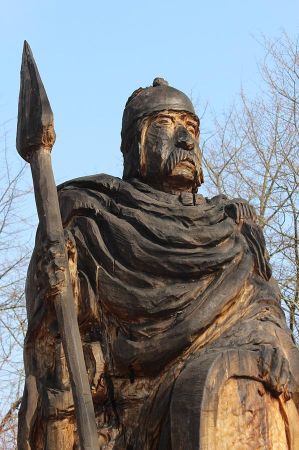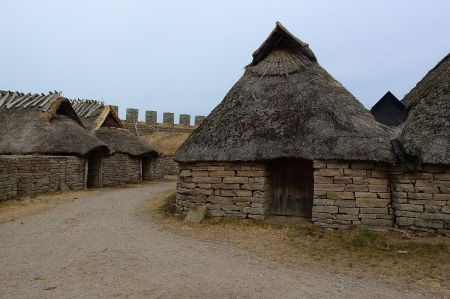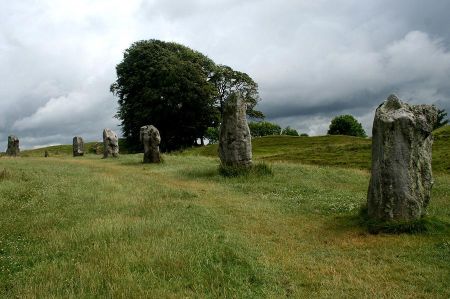The tribal organization of the Celts in Asia Minor
- Written by Portal Editor
In our article about the origin of the Celtic immigrants to Asia Minor, we had already roughly written about the local division of the tribes. Basically, the ethnic group of the Celts who immigrated to Asia Minor is also referred to as Galatians.
This group, which mainly settled in central Anatolia, is roughly divided into three tribes: the Tolistobogiians, the Tectosages and the Trokmerians. Each of these three tribes was in turn divided into four groups, each headed by a leader or village elder. The Galatians referred to their village elders as tetrarchs.
Three different tribes on the way to Asia Minor

All named people formed the so-called Council of the Galatians (300 people), which decided on the orientation and occurrence of important points of discussion. The group of councils assembled at the appropriate time at the jointly designated meeting place, the drunemeton (also known as the sacred oak grove), where problems were discussed and solutions decided.
Later there were only three tetrarchs, each presiding over a tribe. Of course, this also led to a tussle among the tetrarchs, so that reason alone triumphed and in the future only one tetrarch was appointed, who subsequently also called himself king.
The Trokmer tribe settled at Kizilirmak river

In addition to a little cattle breeding and a small cultivation of field crops, which could hardly be changed due to the climatic conditions due to hot, dry summers and long, cold winters in Central Anatolia, there were only few other possibilities for livelihood. Only in the river valleys was some beekeeping possible and of course sheep farming, which provided meat, milk and wool. Even the sheep manure was used as fuel. Besides collecting olives to make oil, there were the lice of the kermes oak, which were collected and used to make dyes. There were also resourceful Galatians who could supplement their livelihood by collecting precious stones. Here it was mainly opals and smoky topaz that were coveted objects of exchange.
Tribes continued to hire themselves as mercenaries
They continued to hire themselves out as mercenaries, whatever the dispute. When there was a time when there was no mercenary hire, the Galatians threatened raids and raids in order to extort tribute money. A mostly profitable business. Additional taxes were even introduced, the proceeds of which went to the Galatians to discourage their raids. The Galatians also use the control over the pilgrimage town of Pessinus to extort protection money.
Gallatic queen Kamma also became the priestess of the Artemis cult
Ancient records by writers speak of human and animal sacrifices. There are reports that the Galatians sacrificed prisoners of war, which has also been confirmed by excavations by well-known archaeologists. In addition to people, horses, cattle and especially dogs were also sacrificed. In accordance with an old Gallic custom, the Galatians also went into battle completely naked. This is also expressly described in ancient records, especially from around 189 BC.
Cicero also reports about his client, the Galatian king Deiotaros, that he undertook no activities without first “professionally” observing the flight of birds, and even trips that had already begun were broken off if there were unfavorable signs from the flight of birds.
Scientists are now certain that the Galatian language was also originally a Celtic language, the parallels in names, tribes and localities are too clear. Even the scholar Jerome said around 400: "The Galatians have their own language, in addition to Greek, which all people in the East speak, quite similar to that of the Treverians". Galatian was consequently a Gaulish dialect, which can be unequivocally interpreted as coming from Gaulish through Galatian proper names: "Deiotaros", the Divine Bull; "Brogitaros", the national bull; "Sinorix", the Old King; "Eposognatos", the horse confidante; "Eporedorix", the horse-chariot king. The same applies to some place names that are typically Celtic: "Ecobriga, Drynemeton", Sacred Oak Grove and "Vindia" as white.
Surely there will be more insights into the ethnic groups and their origins in further research. People have always been willing to leave their homeland for a better future or a better life. The Celts and Galatians also belonged to this group.
Please read as well:
Rafting on the Alara River between Eskibag and Alarahan
Nürnberg - durch die Altstadt bei Nacht
-
-
-
-
-
-
https://www.alaturka.info/en/history/antiquity/5599-the-tribal-organization-of-the-celts-in-asia-minor/amp#sigProId0fc208a00f
